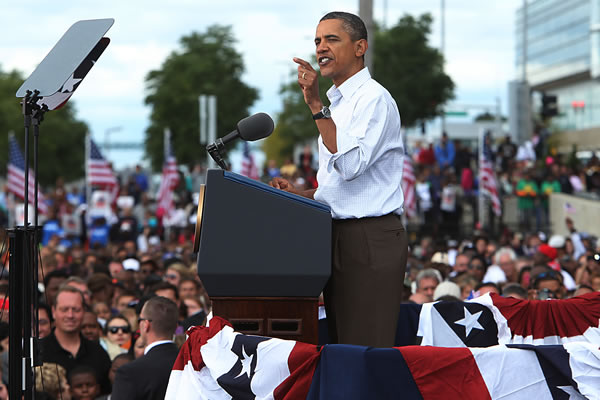Unions Seek to Short-Circuit Workers’ Rights
James Sherk /
It is an old saying that “Businesses get the union they deserve.” Workers whose companies treat them poorly unionize; workers who are treated well do not. President Obama’s National Labor Relations Board (NLRB) wants to shorten this adage. His NLRB wants businesses to get unionized, period. This would hurt both workers and the economy.
Only one in 10 nonunion workers say they want to unionize. Union membership has shrunk to just 7 percent in the private sector. It is easy to see why: In a competitive economy, unions have a hard time raising wages without destroying jobs. Who wants his company to wind up like General Motors?
The union movement has turned to the government to reverse its decline. In August, Obama’s NLRB redefined who gets to vote on unionizing. Before then, workers who shared a “community of interest” would form a single bargaining unit and vote together on unionizing. For example, the cashiers, shelf-stockers, and greeters at a store—hourly workers under the direction of the manager—would form one unit and vote together.
The Obama NLRB has allowed unions to form cherry-picked bargaining units of their supporters. If most workers at a store oppose unionizing, but a union has majority support among the cashiers, it can now form a union of just the cashiers. The shelf-stockers and greeters would not get a vote.
Unionizing brings risks to the entire workplace. The Obama NLRB has allowed unions to selectively disenfranchise the workers who do not want to take that risk.
The Obama NLRB is also in the process of implementing snap elections, designed to prevent employees from making an informed choice about unionizing. Under the current system, unions campaign for months (with management usually ignorant of it) before calling for an election, which occurs five to six weeks later. During the election period, the company tells its side of the story, filling in the details the union organizers omitted—strike histories, dues increases, and union corruption. Workers cast an informed vote after hearing the strongest case from both sides.
Obama’s NLRB is in the process of shortening the election period from six weeks to as little as 10 days. These snap elections would allow unions to campaign for months and then call for a vote before workers hear the other side.
These changes benefit union organizers at the expense of workers. They will also hurt the economy. Unionized companies invest less, are less competitive, and create fewer jobs than nonunion companies. The government should not make it difficult for workers to stay nonunion.
Legislation has been introduced to correct these abuses. The House of Representatives will vote soon on the Workplace Democracy and Fairness Act (H.R. 3094). This act protects the right of workers to decide whether or not to unionize. Specifically, the legislation:
- Guarantees that union elections are not held until workers have at least 35 days to hear from both sides;
- Ensures that employers have at least 14 days to find legal counsel before any legal proceedings begin;
- Restores the prior standards for determining a bargaining unit, preventing unions from cherry-picking which workers can vote; and
- Protects privacy by letting workers decide which contact information to release to union organizers.
These reforms would protect workers and the economy. Unions have a place in America, but they belong at businesses where employees want them—not where union organizers wish employees wanted them.

